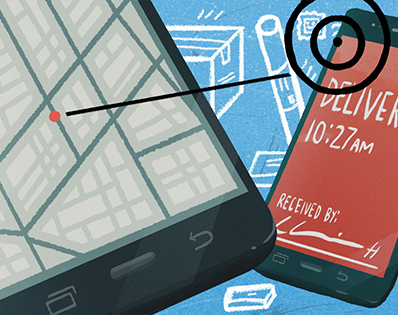
- Home
- Telematics
- Route Planning & Scheduling
The secret to achieving high-performing field operations is capitalizing on their unique advantages and then harnessing the power of modern technology.
Route planning is the process of creating most cost effective and shortest way to reach from starting point to destination with minimum number of checkpoints in between.
Route scheduling is the process of assigning an arrival and service time for each stop. The role of a fleet owner is to make an effective route planning and schedule
timely delivery of goods and services to the customers.
Scheduling and vehicle routing, just like any other business process or product, can become outdated if you don’t regularly assess them. If your competitor can deliver
in half the time you can, you’re going to lose customers. In a 2019 global survey conducted by BigCommerce, 77% of consumers said they had backed out of an ecommerce
purchase because of what they felt were “unsatisfactory shipping options.
Manually scheduling and planning routes is extremely inefficient, and, worse yet, if a customer cancels or makes last-minute changes to an order or if a driver
calls out sick, you basically need to start over. Staying competitive amid evolving technology doesn’t have to be stressful, though.


Address Intelligence
Advanced logistics route planning software powered by machine learning algorithms (ML) has the ability to self-learn the ‘correct’ address just from delivery addresses, successes, and failures in the past. By accurately mapping customer addresses businesses can shrink 28-32 percent of logistics costs by reducing miles per delivery.

Automated route planning
A route mapping software is powered by machine learning algorithms that sift through historical data to suggest the most efficient routes for delivery as opposed to the shortest ones – saving time, as well as fuel costs in most cases

Route Optimization
Efficient route optimization assists companies in optimizing order execution by taking into account a number of variables such as driver schedules, available hours, complete stops, delivery forecasts, and legal requirements. The problem of inaccurate route planning will not just cause your vehicle route planning, but will also increase fuel expenses, legal hassles, and driver attrition.

Real-time visibility
By leveraging digital control towers, routing software empowers enterprises to get real- time visibility of fleet movement. This helps businesses to act upon things like pick-up and drop, route-wise performance, etc. for all orders on a single screen. It ensures timely fulfillment with actionable alerts and notifications.

Electronic Proof of Delivery (E-POD)
Modern routing software equips your delivery partners to collect electronic proof of delivery as an image, signature, or timestamp while also providing an easy way to collect feedback for your business.

Stops Mapping
Save the time by adding the identified stops at the time of route scheduling and planning. Adding a new stop will automatically update the route and the ETA accordingly